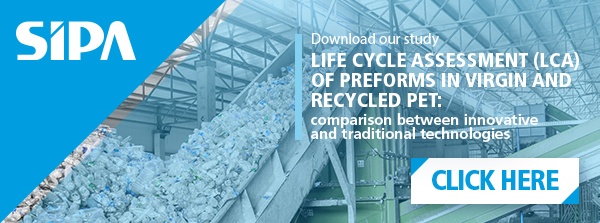In this article we discuss a subject that is on trend and of particular interest for converters and bottlers, that is to say the ability to integrate new types of latest generation injection moulds with existing machines.
A possibility that is becoming more and more relevant, due to the need to increase production with traditional or innovative preform formats.
Let us take a more detailed look at the options made available by a leader in this sector such as SIPA.
Market needs: installing latest generation moulds on existing machines
To respond to customer requests on the possibility of increasing production, SIPA offers the X-Tend approach.
X-Tend is an absolutely state-of-the-art solution that allows the benefits that can be obtained from innovative moulds to be extended to old school injection systems.
The ability to create moulds that will adapt to new market needs derives from the extremely high technical level and flexibility that have always been the features of SIPA’s research and development laboratories.
READ ALSO: "Injection moulding process: customisation, flexibility & maintenance"
Critical points to deal with during project analysis
It is first necessary to examine in detail the main critical points that are faced when considering an existing plant.
In particular, it is necessary to focus on a series of sensitive points, such as:
- The limited number of thermal areas controlling the mould hot-runner
- The limited PET injection pressure
- The restricted space on the press surface
- The need to interface with the existing mould components
READ ALSO: "Hot runner mould system & operating costs: alignment and cleaning"
The integrated options offered by SIPA
To deal with these problems, SIPA uses technical solutions that are able to:
- Define the layout of non-conventional hot runners so as to group together the control areas, taking maximum advantage of the areas available from the machine control. All this without detriment to the high level of fluid-dynamic and thermal uniformity typical of latest generation systems.
- Define the layout of the hot-runner channels, made to measure to give an optimum ratio between load loss, residence times and flow rate balancing. This means it is possible to achieve injection speeds that are typical of new generation systems, even with the limited pressure values available.
- Create non-conventional mould layouts in order to house a larger number of cavities within the same press surface, making a significant increase in line productivity possible.
- Modify the interface elements for the various mould components so as to install the new components on existing platforms.
SIPA consultants at your service
Apart from the indications given above, which represent a starting point, every PET preform manufacturing system has specific characteristics and numerous design variables.
Our consultants are always available to carry out a detailed examination, to look at the models and components, as well as the state of wear in individual parts of the plant, so as to formulate a clear proposal aimed at maximising line efficiency.
Are you interested in obtaining further information on the possibility of integrating latest generation injection moulds on your machines?
Ask our experts








